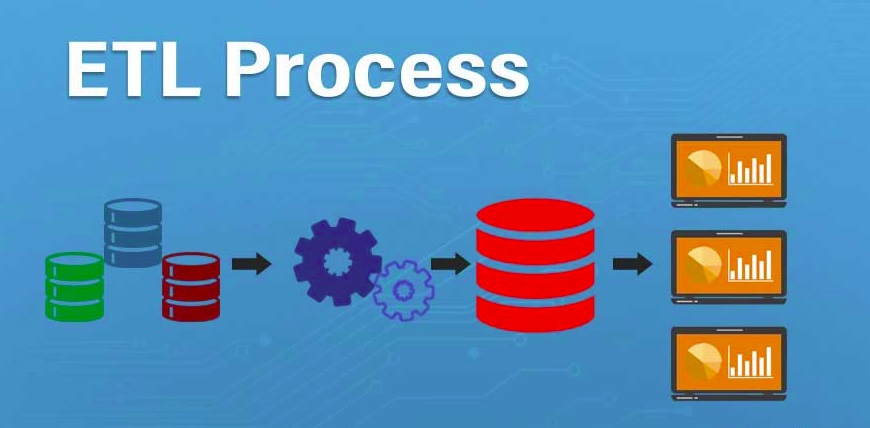What Is ETL? Usages and Guidelines
Considering over 2.5 quintillion bytes of data are produced every single day, businesses need effective tools to get to grips with everything they encounter.
One of the most common architectural tools that businesses will rely on when it comes to handling their data is data warehouses. These act as large-scale facilities which can store and query data. But, to get to this stage, data must be extracted from sources, transformed into a format that works well with the warehouse, and loaded into the correct database.
This process, known as ETL (Extract, Transform, Load), is vital for refining data and later enacting analysis. In this article, we'll break down the ETL process, explaining what happens at each stage and demonstrating how companies most commonly use this process.
Let's get right into it.
 Picture 1 of What Is ETL? Usages and Guidelines
Picture 1 of What Is ETL? Usages and Guidelines
What Happens At Each Stage of ETL?
At each stage of ETL, a distinct process occurs, moving or changing data in a certain way. Each of these stages is vital, and closely flows onto the next. To help you understand why these steps are so important, we'll explain exactly what happens in each.
We'll move through each stage chronologically, following the most typical path that data takes:
- Data Extraction
- Data Transformation
- Data Loading
Data Extraction
Data extraction has become increasingly complicated over the past few years. While there were once very few sources to pull from, a business now has an almost endless stream of data sets to pull from. Whether it's from social media listening, their company website, industry statistics, or any other range of sources, a business is spoiled for choice.
Due to this, data extraction is now a widespread process. This step involves capturing a large volume of both structured and unstructured data and putting it all into one single repository.
These repositories don't necessarily have to be a data warehouse; any facility that has storage capabilities would work, including data storage platforms, analytical tools, on-premise sites, or existing databases.
For the vast majority of data extraction processes, this will be an almost entirely automatic step. While data engineers can pick and choose data to extract, they are normally aiming for quantity over specific quality, meaning an automatic web scraping tool typically does this job.
What's more, AI and other automatic tools are considerably faster than manual data engineers, making this a prime job for automatic extraction tools.
Data Transformation
The second step in the ETL pathway is all about transforming data into a structured format. Not all data is created equally, coming in a range of different formats and types. Think of all the different sources that a business can pull from. Looking for social media mentions might give information in a text format, while even videos can be extracted - meaning you could really be dealing with absolutely any type of data.
Data transformation is about creating a readable version of all of this data. When in different formats, uncleaned data is hard to work with, creating a barrier toward instant analysis. During this stage, companies will:
- Clean Data - Any inconsistencies in the data will be looked at and filled if possible. Equally, if there are any missing bits of information, extraction tools will specifically look to remedy this.
- Verify Data - Any data that seems like an anomaly is flagged. If it is then verified as an anomaly, it will be removed.
- Standardize Data - Across all of the new data in the dataset, it will undergo the process of standardization. This is where the dataset's rules are applied to the data, ensuring it conforms to pre-established rules.
- Sort Data - Data is then sorted into its specific types, ensuring that it is presented in an organized manner.
- Remove Redundant Data - If there are any duplicated data files, then this stage will also see that data being removed.
Many people consider this stage of ETL to be the most important, as it creates clear and usable data. Data that doesn't go through the T stage is useless to businesses, making this vital if a company wants to conduct an analysis on the data they have extracted.
Data Loading
The final step of ETL is all about then putting the data that the transformation stage has cleaned into its final destination. This destination is often a data warehouse, which acts as a company's main data infrastructure. The ability to collect data and formulate it into a warehouse efficiently is actually one of the leading functions that cloud data warehouses display.
When looking at comparisons of leading data warehouse services, like Pinot vs Druid, they often comment on the ease of integrating data and then performing analysis on it. The loading phase is all about catching the formed data at the end of the pipeline, meaning efficiency here leads to great analysis down the line.
While there are many types of data loading, depending on where the data is being delivered, all of them involve moving data from one place to another.
Is ETL The Same as ELT?
While Extraction, Transformation, Loading is the most common process data will go through, it is not the only one. Some businesses use ELT, which is where data is transformed whenever it's called upon by the data infrastructure. This would be like putting all the data gathered into a data warehouse, only then transforming it when it is called upon by the data warehouse for a query.
ELT is often only used by businesses that are dealing with enormous amounts of data that they might not end up using. When farming massive batches of data, businesses would have to spend a large amount of resources on the transformation stage. By incorporating all of this data into a data warehouse and then only letting it undergo a transformation when it is needed, businesses can create a more cost-effective data processing model.
That said, only very large businesses will go for this practice. For smaller and medium-sized businesses, it's very strange to see them operating through EL.
Final Thoughts
The ETL process is essential for businesses that are looking to engage with data. Wherever they gather it from, data that doesn't go through the transformation and loading process will be much more difficult to analyze.
As most businesses are only interested in the insights from the data, and less in the data that they gather, the ETL process typically goes on in the background 24/7. ETL is vital for modern businesses, and something data engineers deal with every single day.
You should read it
- How to find the Process ID of the application on Windows 10
- How to Make a Process Document
- What is the Host Process for Windows Tasks and why does it run much on the computer?
- Summary of how to fix 'The process com.google.process.gapps has stopped' on Android device
- The exit () function in C
- Intel admits it will take 2 years to catch up with the competition
- Learn about System Idle Process
- Software Design Process, Common Software Design Models
- How to manage the priority of I / O process in Linux
- How to check the application using Webcam using Process Explorer
- Learn about the dpupdchk.exe process
- 8 commands for efficient management of Linux processes






 How to Make Software HIPAA Compliant
How to Make Software HIPAA Compliant Introduction to databases - Database
Introduction to databases - Database Nausea and diarrhea may be early symptoms of Covid-19, before you have a fever and cough
Nausea and diarrhea may be early symptoms of Covid-19, before you have a fever and cough Guidelines for securing computer network systems
Guidelines for securing computer network systems Guidelines for drawing straight lines in Adobe Illustrator
Guidelines for drawing straight lines in Adobe Illustrator Coloring gradients in Photoshop - Guidelines for using gradients in Photoshop
Coloring gradients in Photoshop - Guidelines for using gradients in Photoshop